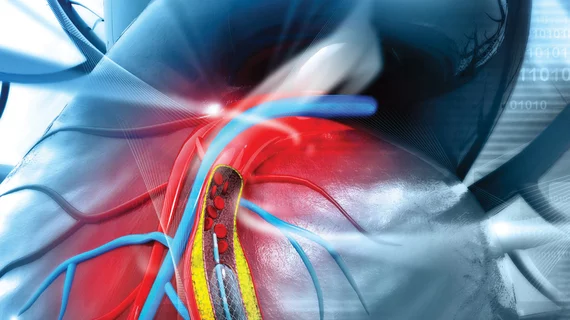Tracking false-positive alerts among cardiac patients
Implantable loop recorders (ILR) used to track cardiac arrhythmias may be susceptible to false positive alerts, according to new data published in Circulation: Arrhythmia and Electrophysiology.
ILRs are standard diagnostic tools for patients with a possible arrhythmia, allowing for long-term remote patient monitoring.
In the analysis, 1,470 patients were monitored during a six-month period from August 2019 to February 2020. The mean patient age was 70 years old.
According to the authors, alerts arrived in the remote monitoring (RM) database classified as asystole, bradycardia, atrial tachycardia (AT)/atrial fibrillation (AF), tachycardia, or patient activated according to device programming and detection.
Data were analyzed by the International Board of Heart Rhythm Examiners–certified cardiac device specialists via the PaceMate service.
A total of 14,086 alerts were transmitted, with median three alerts per patient (6 alerts/patient year).
The authors found that 59.8% of all alerts were inaccurate, with elevated false-positive rates for atrial tachycardia (AT)/atrial fibrillation (AF)AT/AF (74.2%) and asystle (76.8%) alerts.
Instead of a small group of devices being responsible for most of the erroneous alerts, 55.6% added to the false-positive alert burden.
AT/AF alerts were observed the most, followed by asystole (21.2%), tachycardia (19.1%), patient-activated episodes (4.9%), and bradycardia (4.9%).
In addition, there were 5,660 (40.2%) true-positive alerts and 8,426 (59.8%) false-positive alerts transmitted.
The authors found that episodes were false-positive in 2,292 (76.8%) asystole alerts, 5,209 (74.2%) AT/AF alerts, 192 (27.8%) bradycardia alerts, and 733 (27.2%) tachycardia alerts.
False-positive AT/AF alerts were ascribed to recurrent ectopy (90.2%), noise/artifact (9.4%), oversensing (0.2%), and undetermined cause (0.2%).
False-positive tachycardia alerts were associated with oversensing (97.3%), noise/artifact (2.0%), frequent ectopy (0.4%), and undetermined cause (0.3%).
Meanwhile, all false-positive asystole and bradycardia alerts were tied to under sensing.
The group found that 697 patient-activated alerts corresponded with normal sinus rhythm (43.3%), sinus rhythm with frequent ectopy (25.8%), SVT (21.8%), and AF (9.0%).
Asystole alerts were more inclined to be false-positive than AT/AF, tachycardia and bradycardia.
According to their analysis, there were 387 (26.3%) patients who sent only false-positive alerts, median of two false-positive alerts per device.
Meanwhile, at least one false-positive alert was transmitted by 818 patients (55.6%), who had an average 75.8% false-positive alert rate.
“The findings of this study highlight the need for strategies to reduce and manage the burden of false-positive ILR alerts,” wrote lead author, Catherine J. O’Shea, MD, with the Centre for Heart Rhythm Disorders, University of Adelaide, Australia. “ILR implant positioning, device programming, diligent alert adjudication, and RM response pathways all provide opportunity to do so.”
O’Shea et al. noted that ILR positioning at the time of implant is critical, with individual patient body habitus requiring consideration when selecting the optimal position.
“Further, ILR alerts require careful assessment given that more than half may not reflect a true arrhythmia; assessment by qualified cardiac device specialists can lessen the proportion of alerts that are unnecessarily escalated to the treating clinician,” the authors wrote.
In conclusion, the authors said that management systems could be redesigned to include features like third-party alert adjudication and artificial intelligence, designed to lessen ILR alert burden on current RM response pathways.
The research letter can be read here.
